 Vince Guaraldi — ‘Cast Your Fate to the Wind’
Vince Guaraldi — ‘Cast Your Fate to the Wind’
We Five — ‘Cast Your Fate to the Wind’`
Vince Guaraldi — ‘Samba de Orfeo’
Vince Guaraldi — ‘Manha de Carnaval’
Vince Guaraldi — ‘Since I Fell for You’
We Five — ‘You Were On My Mind’
We Five — ‘Make Someone Happy’Let’s Get Together
Fate
Life, as you may have noticed, can be quirky.
For example, have you ever noticed that phenomenon where a small detail in your distant past becomes a crucial focal point many years on?
 My wife and I figured out we were at the same local fair in the city where she lived, the day the Beatles first appeared on Ed Sullivan – years before we met.
My wife and I figured out we were at the same local fair in the city where she lived, the day the Beatles first appeared on Ed Sullivan – years before we met.- N.R. was a girl in my 8th grade home room class whom I never spoke to, never thought of speaking to. Years later, on the other side of the physical, mental and spiritual world, her older brother became my guru and close friend.
- That lady I worked with for a year or two way back when? Thirty years later, in a whole different place, my son would house-sit for her and write his dissertation there.
They say “What goes around comes around”, which I’ve never really understood beyond “Watch out for pigeons shitting on you when you walk under a ladder to avoid being crossed by a black cat.”
I was once shat upon three times in a single day. Some say that’s very good luck. Some say I should have figured out not to sit under a ledge where pigeons were roosting.
 But what I did figure out is that you’d better let that girl next to you at the fair cut ahead of you to throw the baseball at the bowling pins, because you just might wind up married to her, and if you didn’t let her cut in, you’re going to hear about it from here to eternity.
But what I did figure out is that you’d better let that girl next to you at the fair cut ahead of you to throw the baseball at the bowling pins, because you just might wind up married to her, and if you didn’t let her cut in, you’re going to hear about it from here to eternity.
I admit, those are fairly feeble phenomena for flouting the fickle finger of fate. But they’re taken from real life, where I’m always on shaky ground. I do much better within the confines of my record collection.
Jeff’s Record Collection
It’s the late 1960s, I’m a college student, and I’ve got the best record collection in the Midwest, I think. It started with me beg-borrow-and-stealing every nickel I could get my adolescent hands on to stockpile 45s, and then LPs from the cutout bin. If you looked hard enough, among the “101 Strings Plays Liberace” and “Lawrence Welk Goes All Bubbly” you could find an early Roy Orbison or “Bobby Rydell’s Greatest Hits Vol. 6”.
 For four summers I worked in a Pepsi Cola factory. On Fridays I’d get my paycheck ($35, a kingly sum for me) and head straight for this one K-Mart out in the boondocks that for some reason kept getting the most extensive stock of new records in the entire metropolitan area. There was no love among the stockboys for the LPs. They’d just stuff ‘em into whatever bin had room. Which necessitated me lying on the K-Mart floor every Friday to finger through the nether recesses of the back bins on the bottom (floor) level.
For four summers I worked in a Pepsi Cola factory. On Fridays I’d get my paycheck ($35, a kingly sum for me) and head straight for this one K-Mart out in the boondocks that for some reason kept getting the most extensive stock of new records in the entire metropolitan area. There was no love among the stockboys for the LPs. They’d just stuff ‘em into whatever bin had room. Which necessitated me lying on the K-Mart floor every Friday to finger through the nether recesses of the back bins on the bottom (floor) level.
LPs cost $2.99 a piece back then. Most weeks I’d buy two or three or four, digging, dusting, exploring and piecing together shards of information. I should have become a musical archaeologist. Or maybe I did.
 Then I started writing record reviews for the college paper. There were over 20,000 students, a record-buying public, and I soon learned that the record distributors were more than happy to ply me with their goods and their goodies (prime tickets for shows of visiting artists, interviews). So I accumulated one heck of a record collection. It took up about 20% of the floor space of my little pad and about 80% of my waking hours (hey, a guy’s got to eat, doesn’t he?).
Then I started writing record reviews for the college paper. There were over 20,000 students, a record-buying public, and I soon learned that the record distributors were more than happy to ply me with their goods and their goodies (prime tickets for shows of visiting artists, interviews). So I accumulated one heck of a record collection. It took up about 20% of the floor space of my little pad and about 80% of my waking hours (hey, a guy’s got to eat, doesn’t he?).
I used to spend two to three rigorous hours a day reclining on my bed with headphones a-set, eyes a-closed, and mind a-focused, rotating my position between prone, prostrate, recumbent and supine. I didn’t believe in stacking records, so I would actually stand up once every twenty minutes or so to flip the disc or engage in some other necessary technical task.
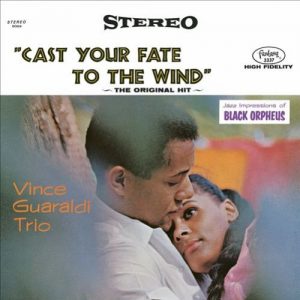 At first glance, you (and my parents) might ask, “Exactly how did this prepare you for life, Jeff?”
At first glance, you (and my parents) might ask, “Exactly how did this prepare you for life, Jeff?”
Well, here we are, half a century later, mining that very same compressed coal seam. If I ran into my wife at that fair, I sure hope I was polite.
I ostensibly listened to rock and roll, then rock. Certainly not jazz. Yet it happens that I occasionally trip over a record I know from my record collection of back then, something so obscure, so off-my-beaten path, that I ask myself how in the world I had the fortune, prescience or just plain dumb blind circumstantiality to have gotten exposed to it.
I just tripped over a lovely clip of my main man Bill Evans playing with guitarist Kenny Burrell, and remembered I hadd a Kenny Burrell album. I knew “Kind of Blue.” I listened to Ravi Shankar even before I knew who his daughter would be. I had stolen two Israeli albums (the Dudaim and Yaffa Yarkoni) from my sister which I still remember well and have served me in good stead over the years. Hell, I even listened to the soundtrack from “Orpheu Negro”.
Jeff Finally Gets to the Point
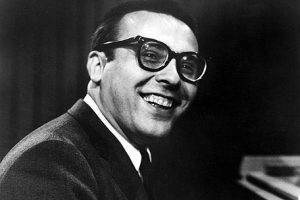 And I guess that all started from Vince Guaraldi’s album, “Jazz Impressions of Black Orpheus”, later retitled “Cast Your Fate to the Wind” (1962).
And I guess that all started from Vince Guaraldi’s album, “Jazz Impressions of Black Orpheus”, later retitled “Cast Your Fate to the Wind” (1962).
Orfeu Negru, Stan Getz and The Brazilians
In 1959, French director Marcel Camus made a Brazilian film called “Black Orpheus” (“Orfeu Negro“), an allegorical treatment of the Orpheus myth set during Carnival in a shanty town. The film featured music that ranged from samba to bossa nova, written partly by Antonio Carlos Jobim, and included a couple of songs by Luiz Bonfá, including the famous ‘Manhã de Carnaval’.
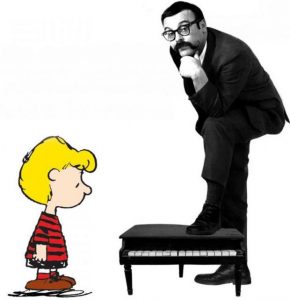 The movie was a big hit in Brazil, and even made some impact in North America. But the big impact occurred with two bossa-inspired American jazz LPs. The first was “Jazz Samba” (1962) by saxophonist Stan Getz and guitarist Charlie Byrd. Its most famous tracks are ‘Desafinado’ (‘Slightly Out of Tune’) and ‘Samba de Uma Nota Só‘ (‘One Note Samba’).
The movie was a big hit in Brazil, and even made some impact in North America. But the big impact occurred with two bossa-inspired American jazz LPs. The first was “Jazz Samba” (1962) by saxophonist Stan Getz and guitarist Charlie Byrd. Its most famous tracks are ‘Desafinado’ (‘Slightly Out of Tune’) and ‘Samba de Uma Nota Só‘ (‘One Note Samba’).
Then came the LP that really took the world by storm, and still maintains a central role as progenitor of a thriving style half a century later, “Getz/Gilberto”. The music was Getz on sax, João Gilberto on guitar and vocals, and Tom Jobim (piano and composition of almost all the songs), with help on vocals on a couple of songs (‘The Girl from Ipanema’, ‘Corcovado’) by Gilberto’s wife Astrud, who wasn’t really a singer but was the only one of the Brazilians present who knew enough English to get through the songs. Her recording sold several trillion records, and inspired her to have an affair with Stan and divorce João. Boy, what goes on behind that laid-back music!
Vince Guaraldi
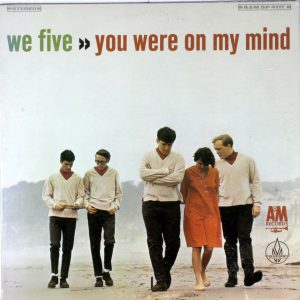 At the time I was of course aware of ‘The Girl from Ipanema’ and probably the whole “Getz/Gilberto” album. But the really quirky part was the Vince Guaraldi connection. Vince (1922-76) was a well-respected jazz pianist from San Francisco whose earliest claim to very modest fame was as a collaborator of vibraphonist Cal Tjader. His maternal uncle was whistler Muzzy Marcellino, just in case you were wondering. In 1962, Vince recorded one side of “jazz impressions of Black Orhpeus”, a very tasteful attempt to hop on the bossa bandwagon, contemporary with Mr Getz and everyone else in the world.
At the time I was of course aware of ‘The Girl from Ipanema’ and probably the whole “Getz/Gilberto” album. But the really quirky part was the Vince Guaraldi connection. Vince (1922-76) was a well-respected jazz pianist from San Francisco whose earliest claim to very modest fame was as a collaborator of vibraphonist Cal Tjader. His maternal uncle was whistler Muzzy Marcellino, just in case you were wondering. In 1962, Vince recorded one side of “jazz impressions of Black Orhpeus”, a very tasteful attempt to hop on the bossa bandwagon, contemporary with Mr Getz and everyone else in the world.
Vince Guaraldi — ‘Samba de Orfeo’
Vince Guaraldi — ‘Manha de Carnaval’
Those four cuts eventually made such a deep impression on me that I delved into the soundtrack the “Orpheu Negro” soundtrack when I was a mere lad of about 15. Sometimes I impress myself in retrospect.
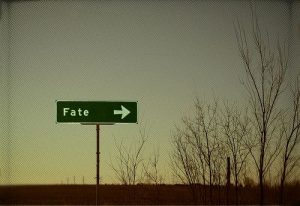 But how did I get to that Vince Guaraldi album? you may ask (I am aware of the fact that you may not actually be asking that question, but I’m going to tell you anyway, just in case).
But how did I get to that Vince Guaraldi album? you may ask (I am aware of the fact that you may not actually be asking that question, but I’m going to tell you anyway, just in case).
Vince had one side of “Black Orpheus”, and filled out Side B with lovely covers of Mancini’s ‘Moon River’ and Buddy Johnson’s 1945 blues ballad ‘Since I Fell for You’ (soon to be a #4 pop hit in 1963 for Lenny Welch), subsequently covered by the likes of Van Morrison, B.B. King, Dr. John, Bonnie Raitt, Barbra Streisand, Tom Waits, Brad Mehldau!, Dinah Washington, Etta James and many others.
But Vince was still lacking a filler, so he composed “Cast Your Fate to the Wind”, released as the B-side of ‘Samba de Orpheus’, inexplicably becoming a jazz song on the pop charts (#10) and a Grammy winner as Best Original Jazz Composition, beating out stellar works that year by Art Blakey, Dave Brubeck, Bill Evans, Andrew Hill, Charles Mingus and Thelonious Monk.
I admit it might not rightfully replace ‘Take the A-Train’ or ‘Giant Steps’ in the jazz pantheon, but it was a lovely tune back then, and still is today. Unlike many songwriters who grow weary of their biggest hits, Guaraldi never minded taking requests to play it when he appeared live. “It’s like signing the back of a check”.
Of course, Vince went on to sign a lot more checks from his Charlie Brown projects. They’re charming, inoffensive, but we’re going to be taking a road ‘less traveled by’, which of course makes all the difference.
 I’d like to take this opportunity to note that my copy of “Jazz Impressions of Black Orpheus”/”Cast Your Fate to the Wind” was a transparent red vinyl LP, the only one in my record collection (I can’t remember where my passport is, but I do remember that). I’m not sure what the significance of that is, but if I every have that 0.9-second “my life flashed before my eyes” experience, that record may well have its very own frame there.
I’d like to take this opportunity to note that my copy of “Jazz Impressions of Black Orpheus”/”Cast Your Fate to the Wind” was a transparent red vinyl LP, the only one in my record collection (I can’t remember where my passport is, but I do remember that). I’m not sure what the significance of that is, but if I every have that 0.9-second “my life flashed before my eyes” experience, that record may well have its very own frame there.
We Five, Cast Your Fate to the Wind (Finally)
‘Cast Your Fate to the Wind’ has had a few covers—a diluted pop success by Sounds Orchestral, a clunky closer for Scorcese’s “Wolf of Wall Street” as covered by Allan Toussaint, a decent if uninspired one by Quincy Jones, and a vocal (with lyrics by Carel Werber) by Mel Torme with a pretty embarrassing arrangement by Marty Paich, who should have known better.
But there was one which made an indelible impression on me, that by We Five. They have been called the first electric group from San Francisco. They were five young folkies led by excellent vocalist Beverly Bivens and singer/guitarist/banjoist Mike Stewart, brother of Kingston Trio member John Stewart (‘Gold’, ‘Daydream Believer’ for the Monkees). We Five’s big hit, ‘You Were On My Mind’, was written by Sylvia Fricker of (husband and wife Canadians) Ian (Tyson) & Sylvia, early stalwarts of the folk movement of the early ‘60s. Here’s their original. And here’s We Five’s version.
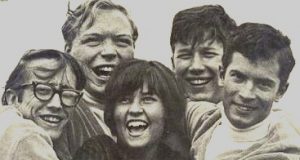 We Five began to juice up folk music—precursors of what would become folk-rock – just like their contemporaries The Byrds, Jefferson Airplane, the Mamas and the Papas, and Spanky and Our Gang.
We Five began to juice up folk music—precursors of what would become folk-rock – just like their contemporaries The Byrds, Jefferson Airplane, the Mamas and the Papas, and Spanky and Our Gang.
We Five’s first album (1966) was a seminal one for me. In addition to ‘Cast Your Fate to the Wind’, it included covers of ‘My Favorite Things’ (associated in my mind back then with “The Sound of Music” more than with Coltrane), ‘Small World’ (Johnny Mathis in 5/4), ‘Let’s Get Together’ (to become a hippie anthem by Jefferson Airplane and The Youngbloods), ‘High Flying Bird’ (good old Richie Havens) and a really lovely ‘Make Someone Happy’.
They were cast in an electric, eclectic folk setting with a beat, with focus on the vocals. I’ve remembered the album fondly for many years. I recently took a relisten to it. What can I tell you? It hasn’t aged all that well; finer stuff was done by others (look no further than the Mamas and the Papas). But credit where credit is due—a mix of jazz and pop covers recast in a vocal setting, with a pinch of a rock sensibility—this became the sonic world from which my current passion for modern a cappella drew no little inspiration.
What’s the moral of this very strange narrative? Beats me. Cast your listening habits to the wind, because you never know who’s going to turn up decades later to bite you on the ankle. Or kiss you on the neck.




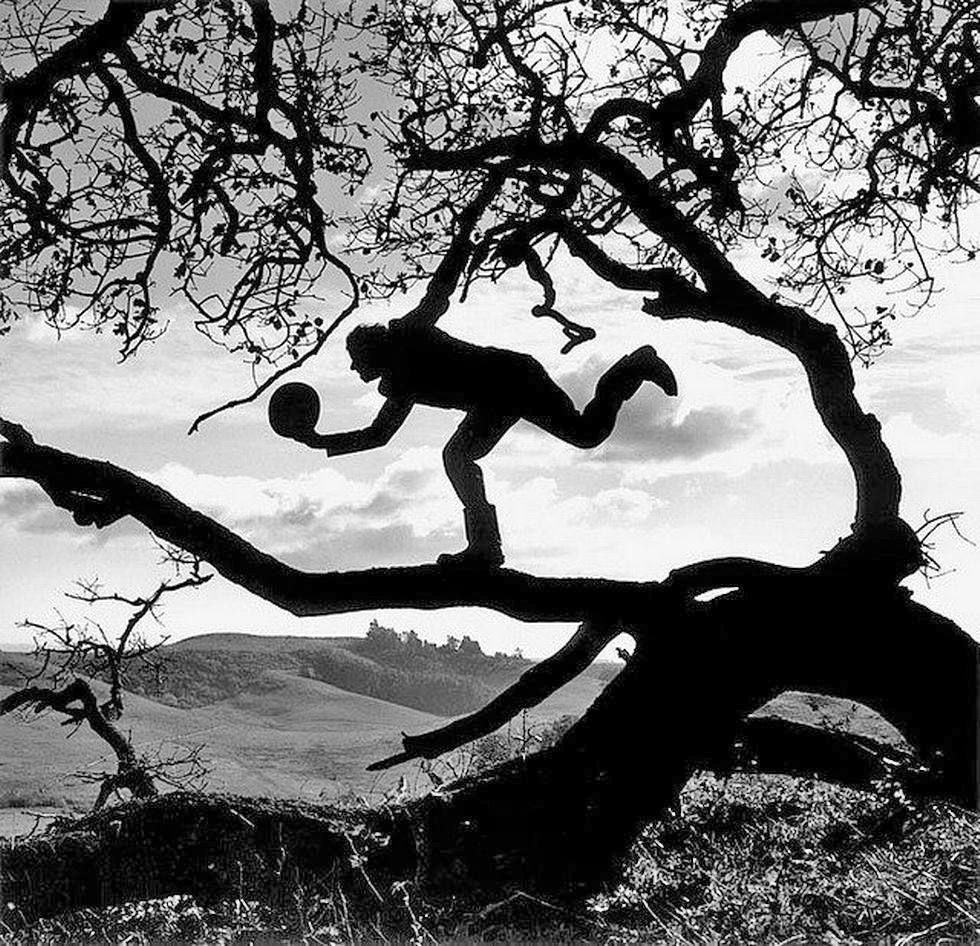
First time I’ve ever seen a photo of Vince Guaraldi without the big mustache.
His album “Jazz Impressions of a Boy Named Charlie Brown” came out with cartoon inserts and everything and then, unsure of itself, for a long time the studio failed to release the movie. If I recall correctly, even when it did start releasing Peanuts movies “A Boy Named Charlie Brown” was not the first although the Guaraldi music did consistently pop up on the background.
Another unusual project of his was a jazz mass of sorts, “Vince Guaraldi at Grace Cathedral,” with Bishop Pike on hand.
Apparently there was a crew from educational TV shooting when Guaraldi recorded the Black Orpheus album. There was a documentary broadcast where, tired of take after take of the same thing, Guaraldi says into the mike, “Cast Your Fate to the Wind, take one” and the man in the control booth says “What?” Guaraldi repeats “Cast Your Fate to the Wind, take one.” Maybe staged; I don’t know.
Another little thing: The lyrics are, as far as I can tell, the only known lyrics ever written by Carel Werber (also known as Carel Rowe). See http://impressionsofvince.blogspot.co.il/2012/05/carel-werber-speaks-although-not-to-me.html .
You’re way beyond me in the VG Trivia department.
Fun posting. Thanks. I met Sylvia Tyson once at an Amnesty International benefit a zillion years ago. She was very tall and both of them were very good looking. They had a good music show on CTV for awhile but they eventually split up and he became a cowboy out west.
I love anything VG did. I’m proud to say I can identify him after only a few notes from his piano, his sound is unmistakable. Like a lot of young people in the 60’s I first discovered him via Peanuts, the proverbial tip of the iceberg.
I wasn’t a huge folk fan as a kid, having missed that train by several years, but the first time I heard Beverly Bivens sing “You Were on My Mind,” I was transfixed. Now THIS is what a Woman should sound like. She paved the way for my appreciation of Slick and Ronstadt.
Thank you for the repost.
I think we’re the same age, both grew up in the midwest, and definitely shared the same musical tastebuds. And here’s another parallel track we shared – the happy discovery of that sexy new (nova) bossa from Brazil. My sophisticated older cousin was always looking for new jazz to feed his pricey turntable and AR speakers, and I happened to be over for a family dinner with the Byrd/Getz Jazz Samba LP serving as soundtrack. I vaguely remember my dad samba-ing into the kitchen, Jackie Gleason-style, to fix the apres-dinner drinks. I went out and oicked that up the next day on my way home from school. Then Getz/Gilberto. I still play that album nearly weekly, and I’m probably on my 5th vinyl version by now. Never gets old. It’s stunning how easily and freely Getz played this bossa nova, like he was born to do it. His solos are marvels, and his interstitial blowing between vocal lines is sensitive, sensual, and endlessly inventive, a lighter than air. None of the other sax greats of the day to come close to Getz’s affinity for it. It’s funny that a combative, hard-boiled jazzer from NYC would define Bossa Nova for most of us to this day. My samba-seduced dad sprung for a night on the town with his underage son to see the Getz Au Go Go quartet at Chicago’s Mister Kelly’s nightclub shortly after the success of Getz/Gilberto and the Girl from Ipanema. He even convinced me to get all dolled up in my Sunday School suit, a tab- collared shirt, skinny tie, and polished black penny loafers. (They let me in). Getz was a bit worse for the unlimited band bar tab, but Astrud was adorably and sultry, and vibist Gary Burton was astounding and amazing to watch from a ringside seat. It was an unforgettable night. Later Getz would dismiss his bossa nova phase. But, as talented and versatile as he was, that’s the music that put him on the map.
Guaraldi is highly under-appreciated, I think. And I would take serious exception to your dismissal of his Peanuts’ Christmas music as “inoffensive”. It’s brilliant, original, tuneful, swinging, and classic. It never sounds dated or gets tiresome. It’s covered by everybody and their mother. We may be attached at the hip, but I’ll have to part company with you on this one, sir.
Thanks for sharing.
1. I learned a new word (a very nice one).
2. AR speakers
3. Jackie Gleason-style. Nice one.
4. You caught me on Peanuts’ Christmas. I’ve hardly familiar with it, and have no right to be dismissive of it.
5. We’d all sound like that if we could.
just getting to this. so interesting, although I didn’t know this artist…I think I like him, though…
Vince’s standard-issue version of Cast Your Fate is one of my favorite recordings of possibly my most favorite ‘pop’ composition. But he did not compose it for the Jazz Impressions of Black Orpheus album (my copy was translucent blue vinyl). He’d composed it years earlier (late 50’s I think) and honed it in his many live performances around the Bay Area. He really believed in that tune, and when he went to Sol Weiss (founder of Fantasy with his brother Max) to choose the tracks for the 45rpm single to promote the album, Vince said let’s use Cast Your Fate. Weiss declined. Vince pressed him. Weiss said no. Vince then jumped up on Weiss’s desk and stomped around saying he’d quit the label if Cast Your Fate was not on the b-side of the single. Weiss relented.
Soon after, the morning host on a small AM station in Sacramento found that side , dug it, and started using snips from it as he faded in/out from regular segments of his program. Listeners started phoning in to ask what it was, and the host played the entire tune straight thru. Then the dam broke. Cast Your Fate to the Wind was eventually one of the best-selling jazz instrumental tracks in history.
Vince shortly thereafter got a call from Miles Davis asking him to join Mile’s band. Vince had a sound similar to Red Garland and I assume Miles wanted more of that. Vince declined because he liked his life in the Bay Area, and he was getting pretty comfortable with the royalties from Cast Your Fate.
The Charlie Brown stuff has its own legends attached, and the original sound track from CB Xmas was the key element of that program (that almost never happened).
Notes:
• All the above comes mostly from Larry Vuckovich, Vince’s only music student, who is still playing the Bay Area scene.
• We had a night out with Vince after an evening concert at a winery in Lodi(!). Dinner at 2am. Vince said almost nothing the entire evening. I was in awe of him then, and still today whenever I hear Cast Your Fate.